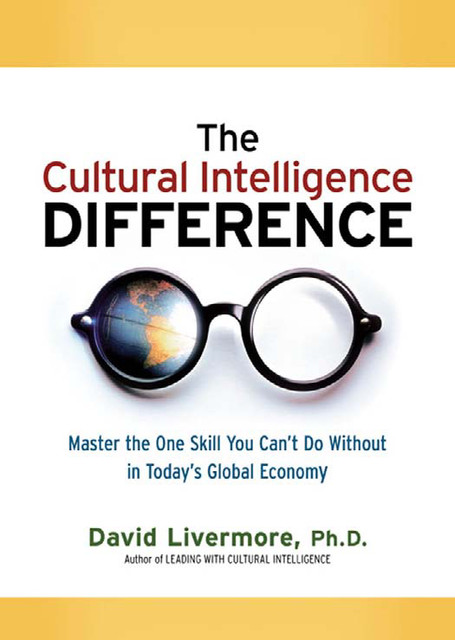How do you work effectively in a cross-cultural team? What should you do to seal a deal with a foreign partner?
The answers to these and more are found in The Cultural Intelligence Difference by cultural intelligence thought leader David Livermore.
Billed as the “one skill you can’t do without in today’s global economy”, Cultural Intelligence or CQ is a scientifically validated instrument. It joins the ranks of other forms of “intelligence” like IQ (Intelligence Quotient), EQ (Emotional Intelligence), SI (Social Intelligence), and AQ (Adversity Quotient).
Collectively, these different “intelligences” helps us to more effectively navigate our lives and our workplaces.
So how do we measure CQ and use it to improve our cross-cultural effectiveness?
What is Cultural Intelligence (CQ)?
According to Livermore, the definition of cultural intelligence can be understood as follows:
“Cultural intelligence is the capability to function effectively in a variety of cultural contexts – national, ethnic, organisational, and generational.”
Rooted in intelligence research, a strong performance in CQ helps us not only to better understand different cultures but to effectively solve problems and adapt across multiple cultural settings.
Such abilities are critical in an increasingly connected global economy. With newly emerging markets, diverse workforces, and trans-national teams, everybody needs to be more culturally smart.
Measuring One’s CQ
Before determining which areas to focus on, Livermore suggests that a CQ Self-Assessment test could be taken.
Focused on the four CQ Capabilities – CQ Drive, CQ Knowledge, CQ Strategy, and CQ Action – the test helps you to gauge how high or low your CQ levels are. From there, you can determine which areas you should focus your energies and attention on.
Through improving your CQ, you can enjoy benefits such as the following:
- Better ability to adjust to a cross-cultural environment at work;
- Enhanced job performance in leadership, decision making, negotiation and networking;
- Greater personal well-being; and
- Higher profitability for the enterprise.
Let us now dive into each of the capabilities.
CQ Drive (Motivation)
The first pillar of cultural intelligence, CQ Drive measures the extent to which you are energized and persistent in your approach to culturally diverse situations. It covers three key areas:
- Intrinsic factors: natural interest and enjoyment;
- Extrinsic factors: tangible benefits and rewards; and
- Self-efficacy: confidence in cross-cultural work.
In determining one’s CQ Drive, the following question is asked and answered:
Do you have the confidence and drive to work through the challenges and conflict that inevitably accompany cross-cultural situations?
To improve one’s CQ Drive, 8 strategies are proposed:
- Face your biases and act on them.
- Connect with existing interests (eg sports, food, fashion or other areas) in another culture.
- Scare yourself by imagining what would happen if you are not culturally savvy.
- Visualize success.
- Reward yourself, preferably with a related reward (eg learning Japanese and then having a Japanese meal where you order in the language).
- Recharge your batteries.
- Maintain control by reducing your reliance on hosts.
- Travel.
CQ Knowledge (Cognition)
Quantifying your understanding about culture and how it shapes behaviour, CQ Knowledge straddles four sub-dimensions:
- Business/Cultural Systems: knowledge about cultural systems in the world;
- Interpersonal/Cultural Values: understanding of how cultures differ in their values, religious beliefs, social etiquette etc;
- Socio-Linguistics: knowledge of different languages, verbal and nonverbal cues; and
- Leadership: understanding of how effective management differs across cultures.
To improve upon your CQ Knowledge, the author suggests the following strategies:
- Study culture up close by people watching, attending celebrations, enjoying art, eating and shopping;
- Google smarter using specific sites and keywords;
- Increase global awareness by reading relevant international and foreign news;
- Go to the movies or read a novel;
- Learn about cultural values – the degree of individualism vs collectivism, power distance, uncertainty avoidance, cooperativeness-competitiveness, time orientation, context (high or low), and doing-being;
- Explore your cultural identity;
- Study a new language;
- Seek diverse perspectives; and
- Recruit a CQ coach.
CQ Strategy (Meta-cognition)
Motivation and understanding alone isn’t enough in cross-cultural work. One needs to be aware of what’s doing on in a cross-cultural situation and be able to manage them effectively. This is where CQ Strategy comes in.
There are three aspects to CQ Strategy:
- Awareness: Awareness of the personal and cultural dynamics occurring in a multicultural situation.
- Planning: Taking the time to anticipate how to best engage.
- Checking: Monitoring if you are behaving appropriately in a cross-cultural situation.
Once again, there are various strategies available to help us improve our CQ Strategy:
- Notice; don’t respond: ask yourself why things happen in a certain way instead of responding hastily;
- Think widely and consider what others do as “different” rather than “wrong” or “right”;
- Focus deeply and embrace mindfulness – don’t run on automatic;
- Journal and reflect;
- Plan social interactions and consider how you’ll behave;
- Manage expectations;
- Create checklists so that you don’t miss out on key steps;
- Reframe a situation so that you can channel your energy away from frustration to solution;
- Test for accuracy of your observations, plan and actions; and
- Ask better questions: probe more deeply into what’s behind something you observe.
CQ Action (Behaviour)
Last but certainly not least, CQ Action quantifies the extent to which you can act appropriately in cross-cultural situations. There are three sub-dimensions to this:
- Nonverbal: How comfortable you are in adapting your nonverbal behaviours (eg gestures and facial expressions);
- Verbal: Modifying your verbal behaviours (eg accent, tone, pronunciation, and language); and
- Speech Acts: Altering the way your communicate in areas like the way you provide critique, express gratitude and so on.
To improve upon your CQ Action, the following strategies are listed in the book:
- Develop a repertoire of social skills: social etiquette, national pastimes, questions on family, etc;
- Be an actor and mimic your cross-cultural counterparts (but don’t overdo it);
- Make taboos taboo by learning about them and not committing them;
- Use basic vocabulary;
- Try new vocal sounds in the other culture;
- Slow down;
- Put yourself in a place of need by asking for help;
- Join a multicultural team.
A Cross-Cultural Compass
Comprehensive and systematic, The Cultural Intelligence Difference provides a useful roadmap to anybody seeking to navigate the unchartered oceans of diverse cross-cultural situations. Backed by research and case studies, it tackles an important yet oft neglected element of management and leadership.
With increasingly diverse workplaces and growing inter-connectivity between nations and cultures, cultural intelligence will take on greater significance in the years to come.
By embracing the holistic approach to cultural intelligence described in the book, we are better prepared to meet the challenges of a new world.


